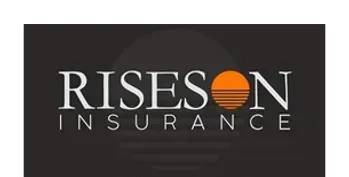
Understanding Insurance Endorsements: Types and Importance
July 7, 2024 | Insurance
Insurance policies are designed to provide specific coverage tailored to individual needs and circumstances. However, as life evolves and situations change, policyholders may find it necessary to modify their insurance coverage. This is where insurance endorsements come into play, offering flexibility and customization to ensure that your insurance policy remains relevant and effective over time.
An insurance endorsement, also known as a rider or an amendment, is a written modification to an insurance policy that alters its terms or coverage. It is used to add, delete, or change the scope of coverage provided under the original policy. Essentially, an endorsement allows policyholders to tailor their insurance protection to better suit their unique needs.
Additional Insured Endorsement: This type of endorsement extends coverage under your policy to another party not originally included. For example, if you operate a business and need to add a contractor or landlord as an additional insured, this endorsement ensures they are covered under your policy for specified risks.
Coverage Extension Endorsement: Sometimes, policyholders may require temporary or limited coverage for specific situations not typically covered under their policy. A coverage extension endorsement provides additional protection for a defined period or circumstance, such as rental car coverage on an auto insurance policy.
Exclusion Endorsement: Conversely, an exclusion endorsement excludes coverage for certain risks or situations that would otherwise be covered under the base policy. For instance, if a homeowner homeowner has a swimming pool that poses a liability risk, they may exclude coverage for injuries related to the pool.
Increased Limits Endorsement: If the standard limits of coverage provided by your policy are insufficient, an increased limits endorsement can be added to boost the coverage amounts. This is common in liability insurance, where businesses may require higher limits to adequately protect against potential claims.
Policy Modification Endorsement: A policy modification endorsement is used to make broad changes to the terms and conditions of the policy itself. This could include adjustments to deductibles , changes in coverage terms , or updates to the insured property or individuals.
Insurance endorsements offer several key benefits:
Customization: They allow policyholders to tailor their coverage to meet specific needs or circumstances, ensuring adequate protection without paying for unnecessary coverage. Flexibility: As life situations change, endorsements provide flexibility to adjust coverage accordingly, whether due to changes in assets, risks, or legal requirements. Enhanced Protection: By adding or modifying coverage through endorsements, policyholders can enhance their overall protection against unforeseen events and liabilities.
In summary, insurance endorsements play a crucial role in ensuring that your insurance policy remains relevant and effective throughout its term. Whether you need to extend coverage to additional parties, adjust limits, or modify exclusions, endorsements provide the flexibility and customization necessary to meet your evolving insurance needs. As you review your insurance policies, consider how endorsements can enhance your coverage and provide peace of mind in an ever-changing world. For personalized advice on selecting the right endorsements for your policies, consult with your insurance provider to ensure you have comprehensive protection tailored to your specific circumstances.
At Riseson Insurance located in Tempe , we help you understand what endorsements are best suited for your assets.
What is an Insurance Endorsement?
Types of Insurance Endorsements
Importance of Insurance Endorsements
Conclusion
- This type of endorsement extends coverage under your policy to another party not originally included. For example, if you operate a business and need to add a contractor or landlord as an additional insured, this endorsement ensures they are covered under your policy for specified risks.
- Sometimes, policyholders may require temporary or limited coverage for specific situations not typically covered under their policy. A coverage extension endorsement provides additional protection for a defined period or circumstance, such as rental car coverage on an auto insurance policy.
- Conversely, an exclusion endorsement excludes coverage for certain risks or situations that would otherwise be covered under the base policy. For instance, if a homeowner homeowner has a swimming pool that poses a liability risk, they may exclude coverage for injuries related to the pool.
- If the standard limits of coverage provided by your policy are insufficient, an increased limits endorsement can be added to boost the coverage amounts. This is common in liability insurance, where businesses may require higher limits to adequately protect against potential claims.
- A policy modification endorsement is used to make broad changes to the terms and conditions of the policy itself. This could include adjustments to deductibles , changes in coverage terms , or updates to the insured property or individuals.
- Customization: They allow policyholders to tailor their coverage to meet specific needs or circumstances, ensuring adequate protection without paying for unnecessary coverage.
- Flexibility: As life situations change, endorsements provide flexibility to adjust coverage accordingly, whether due to changes in assets, risks, or legal requirements.
- Enhanced Protection: By adding or modifying coverage through endorsements, policyholders can enhance their overall protection against unforeseen events and liabilities.
